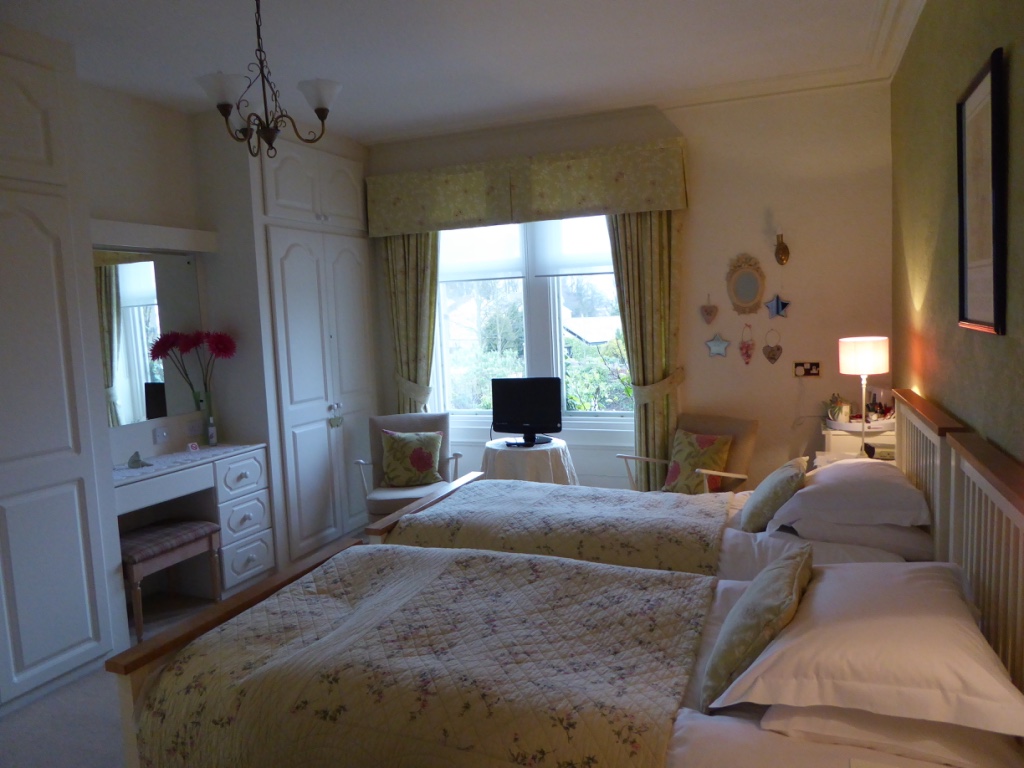With the threat of rain in the next coming days we headed off early to Alnwick to see the Alnwick Gardens whilst the weather held.
The gardens are a registered charity with programs aimed primarily at children, the handicapped and the elderly. The Duchess of Northumberland is one of the Trustee and the main driving force. The gardens are two thirds complete and she is currently raising the remainder of the £80 million needed to complete the overall design.
It is a controversial garden. Many thought it should be a traditional formal garden to complement the castle and others thought the Duke should have donated the land and $8 million to parks and gardens around the town – none of which would have brought in the huge amount of money to Alnwick that the gardens do.
We found it to be a garden full of fun and inspiration and Ed and I had practically redesigned our garden by the time we had finished. It has a lot of quirky features and has enormous appeal for people of all ages, particularly children.
When you pass through the archway into the garden, it is impossible to miss the Grand Cascade. The Grand Cascade is the largest water feature of its kind in the country. Every minute, thousands of gallons of water tumble down a series of weirs, with water displays on the hour and the half hour. Jets of water shoot up into the air and splash on the terrace as children run underneath them. Children also collect water from the water walls at the foot of the Grand Cascade in John Deere’s mini tractors.
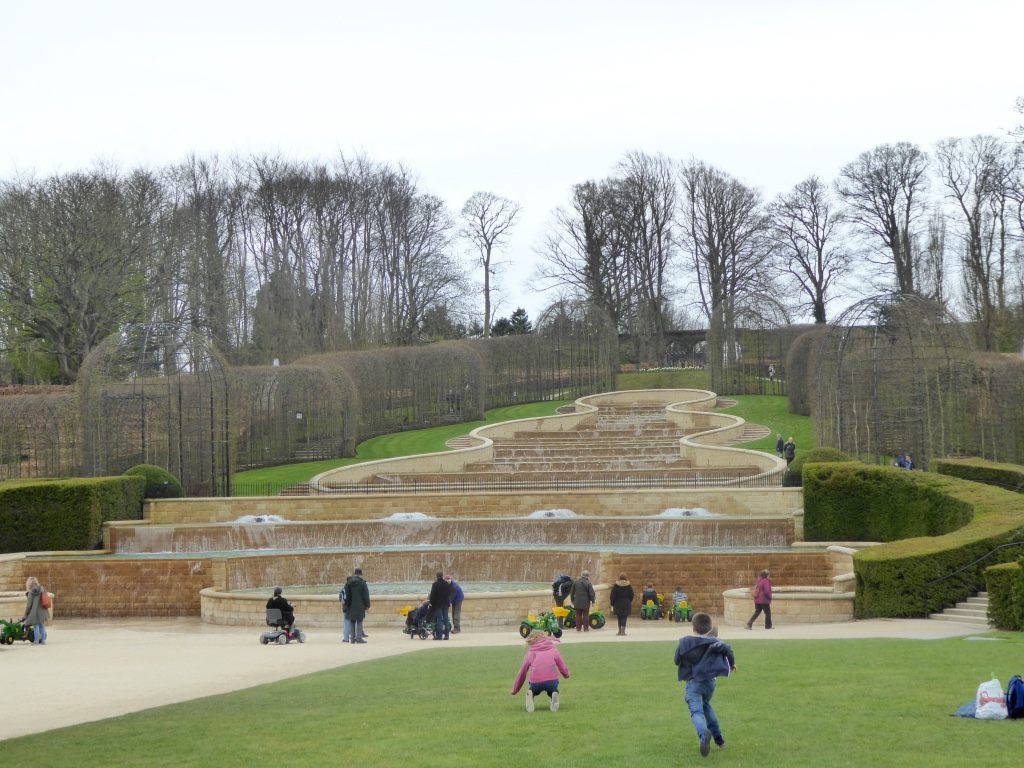
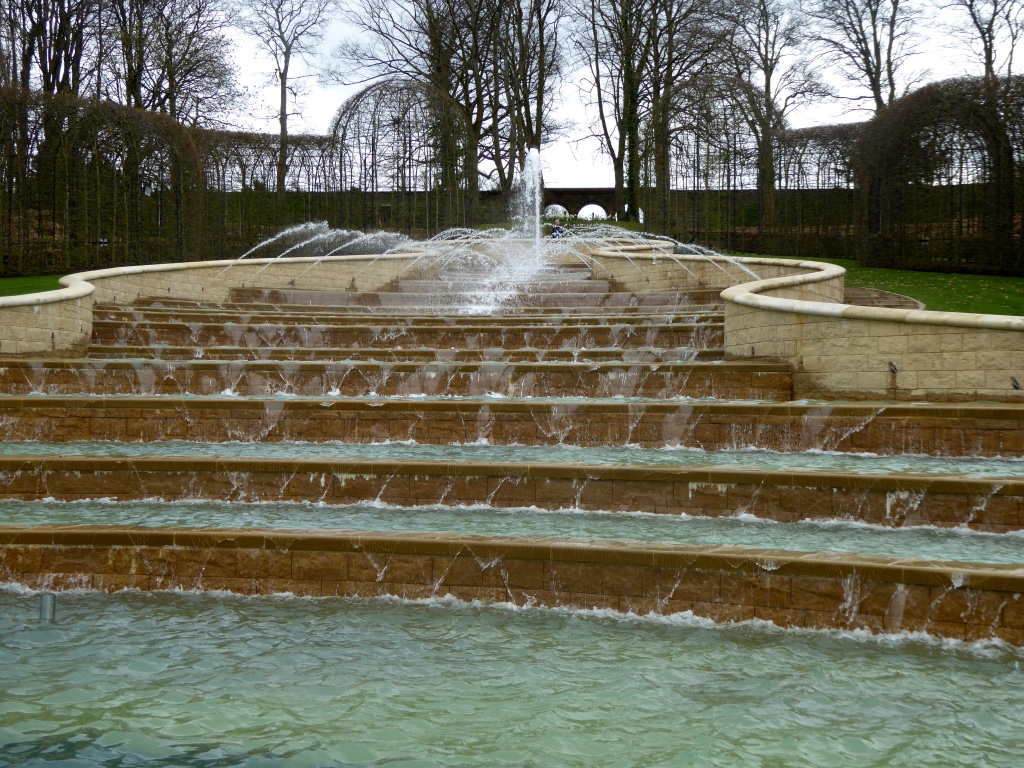
We had lunch overlooking the Grand Cascade and then wandered through the bamboo labyrinth. No escaping bamboo roots here! The whole area is planted on built up beds on concrete and provides a cool, leafy walk that is amazingly difficult to exit.
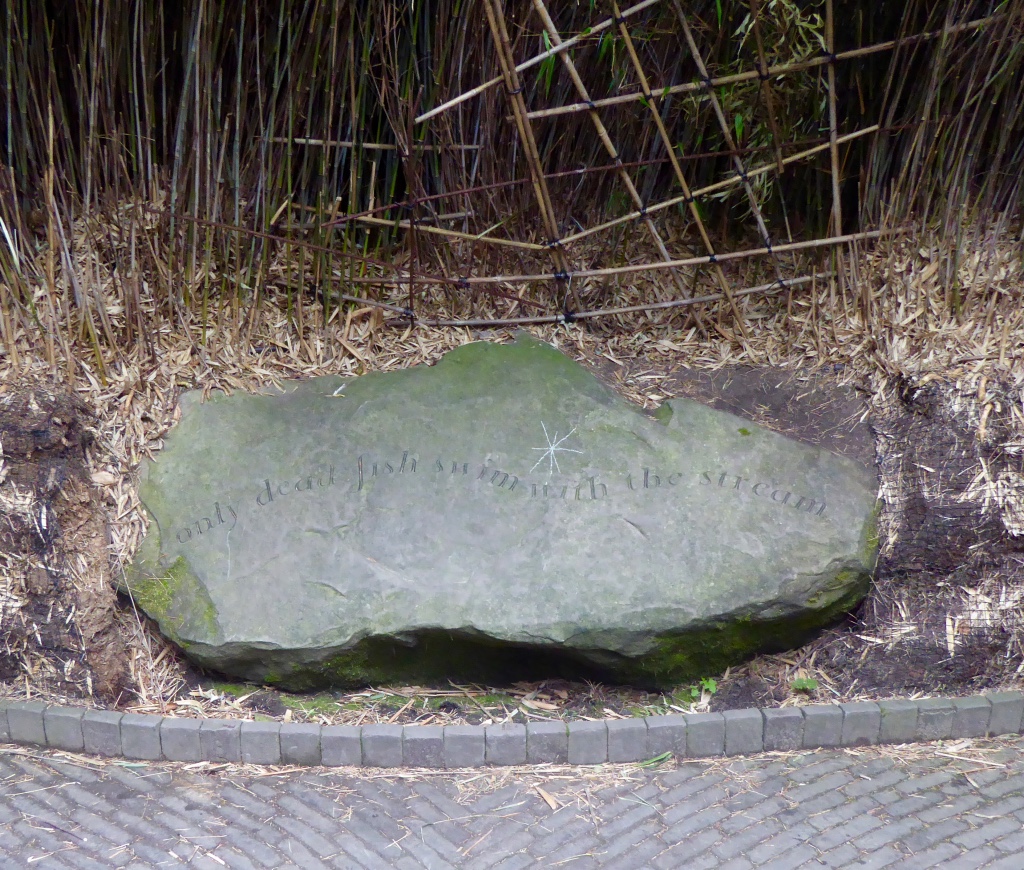
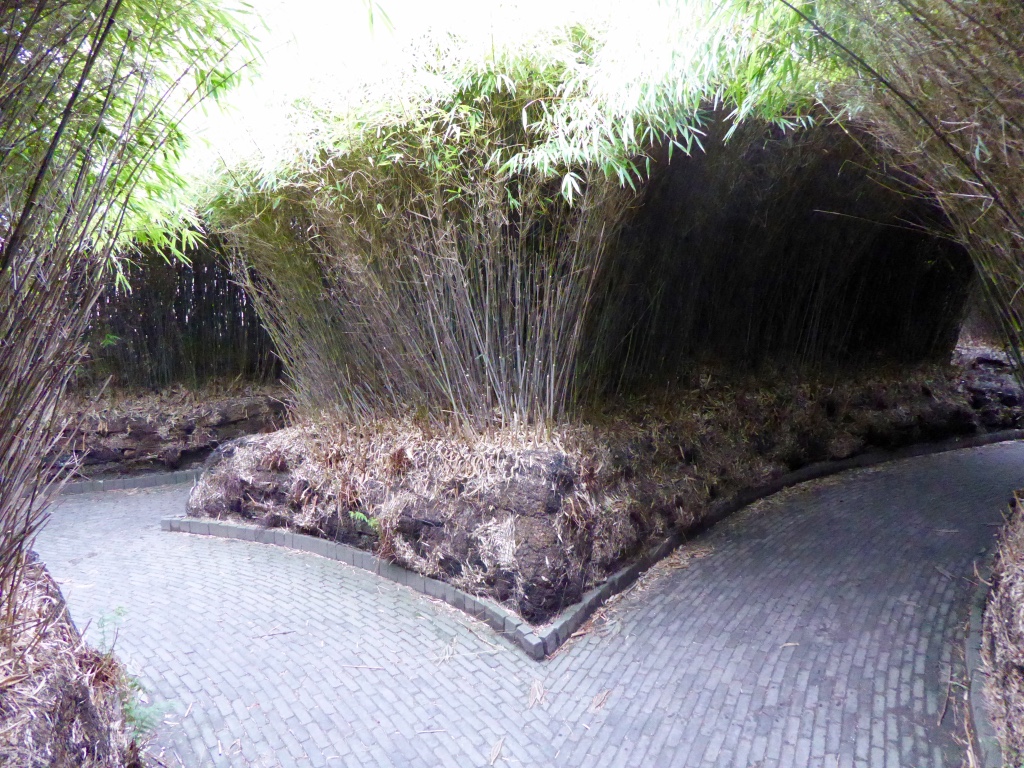
We eventually found our way out into the magnificent Rose Garden with pathways below pergolas swathed in roses, honeysuckle and clematis. Though it was a little early in spring it must be magnificent later on with masses of fragrant roses, a mix of climbing, shrub, old, and English varieties. There are more than three thousand David Austin Roses, including a beautiful new English rose, the Alnwick Rose, launched at RHS Chelsea Flower Show in 2001.

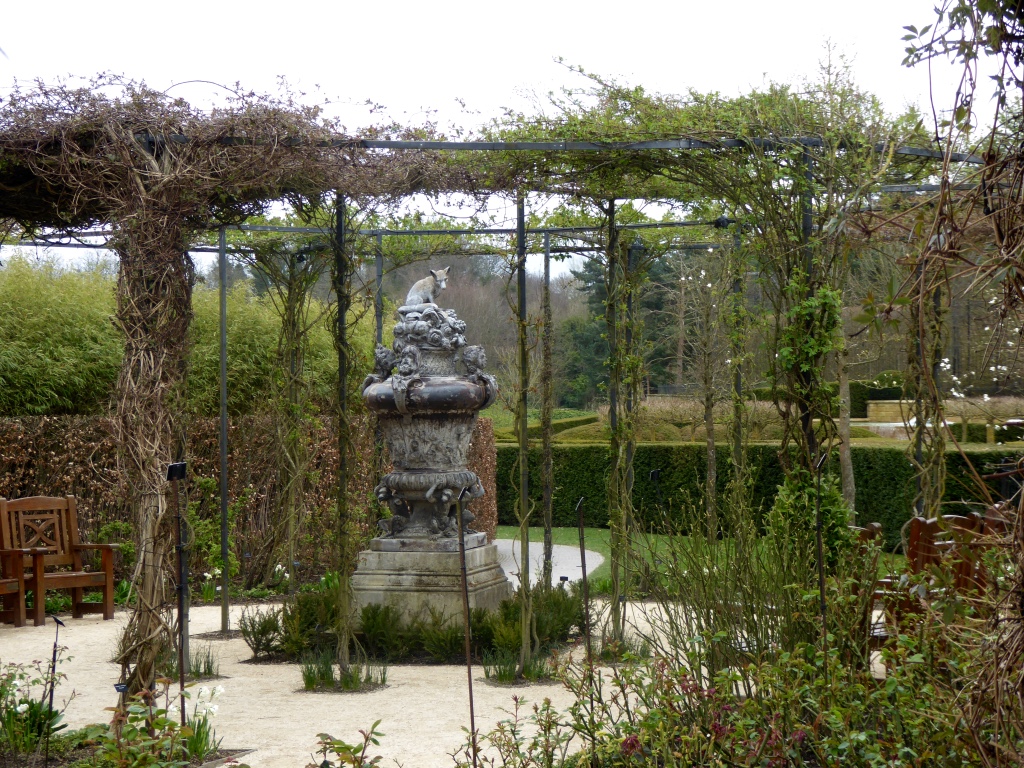
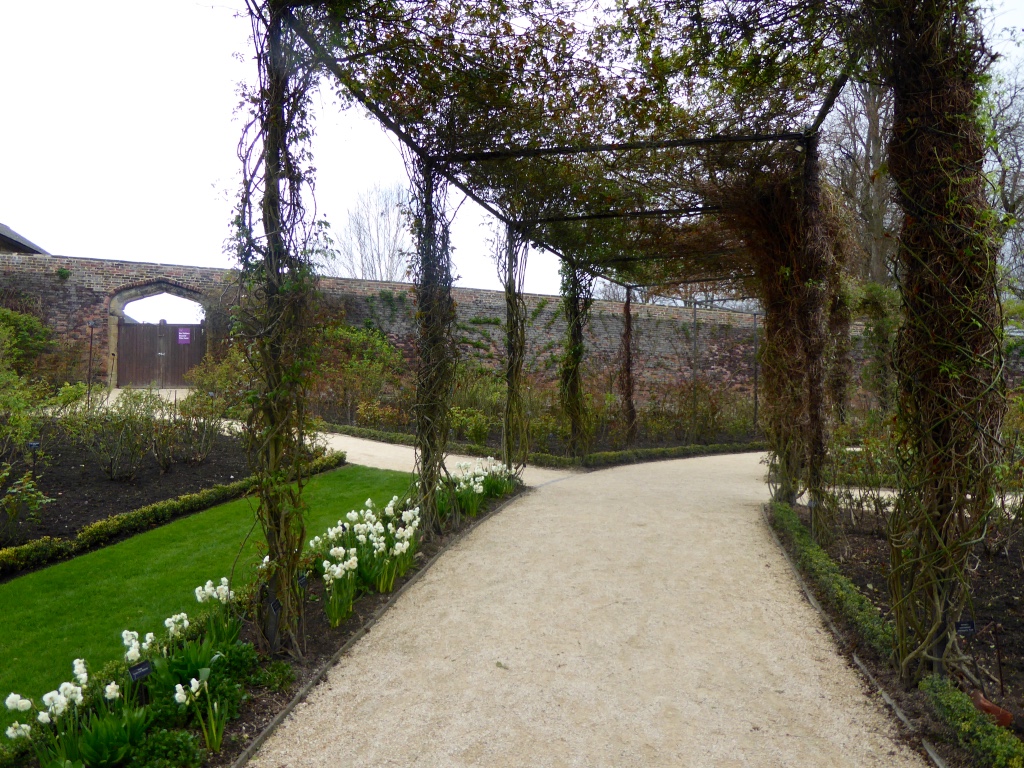
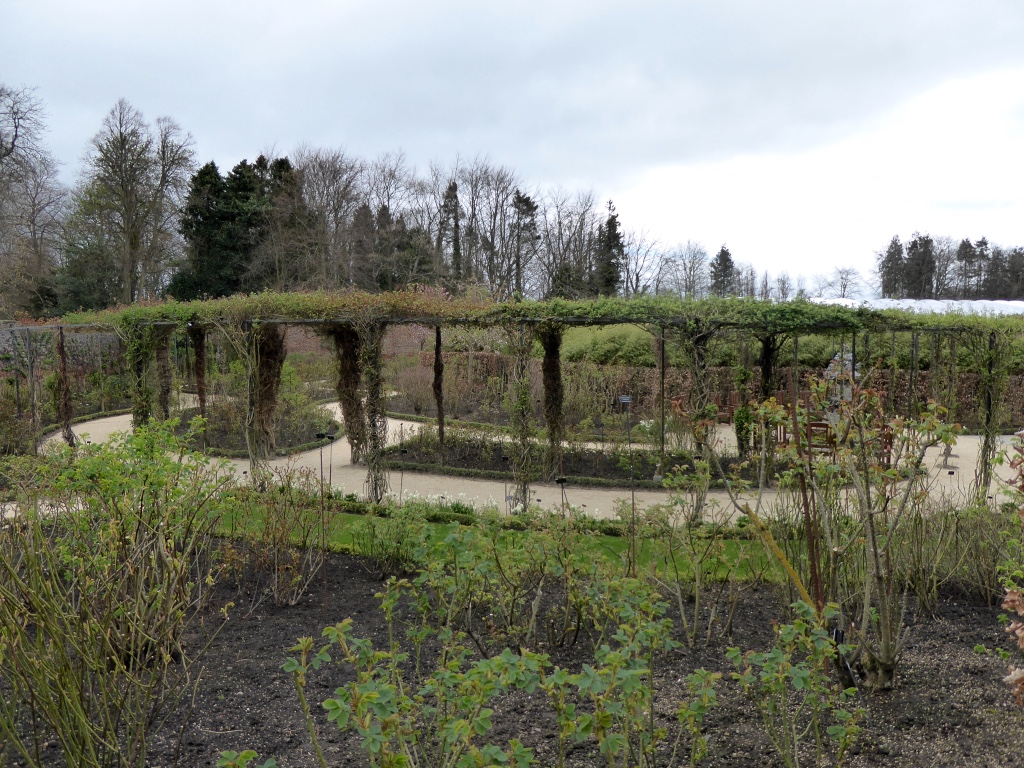
Walking higher up the garden from the Rose Garden we came to an area of clipped yew and beech hedges overlooking the Serpent Garden.
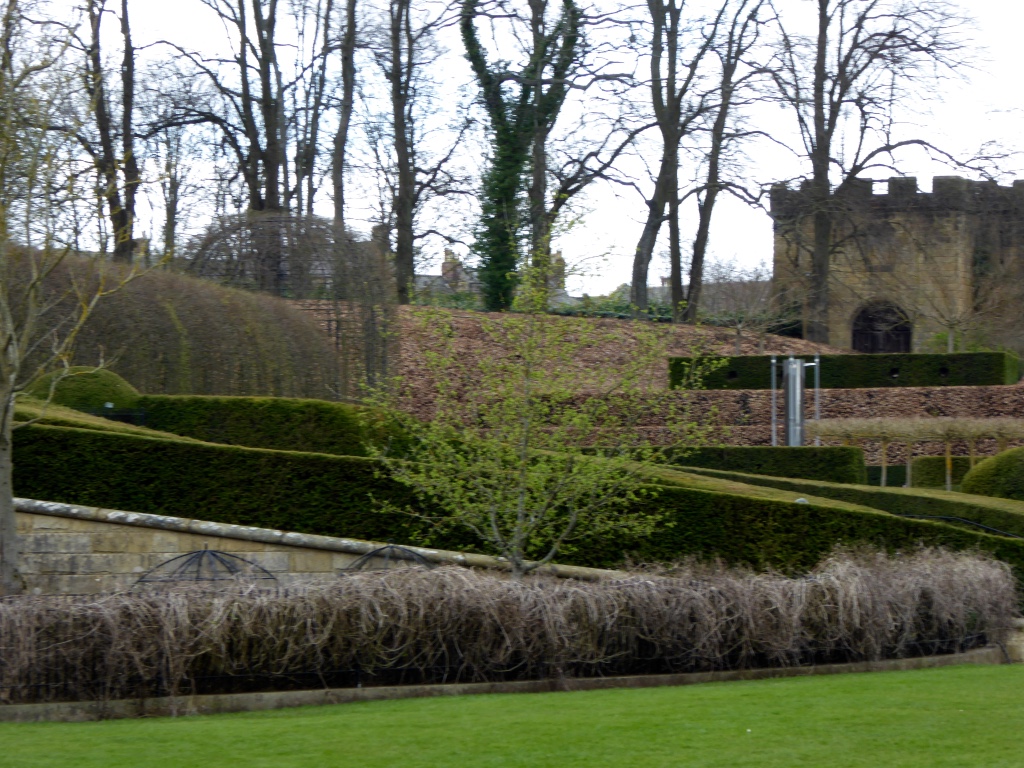
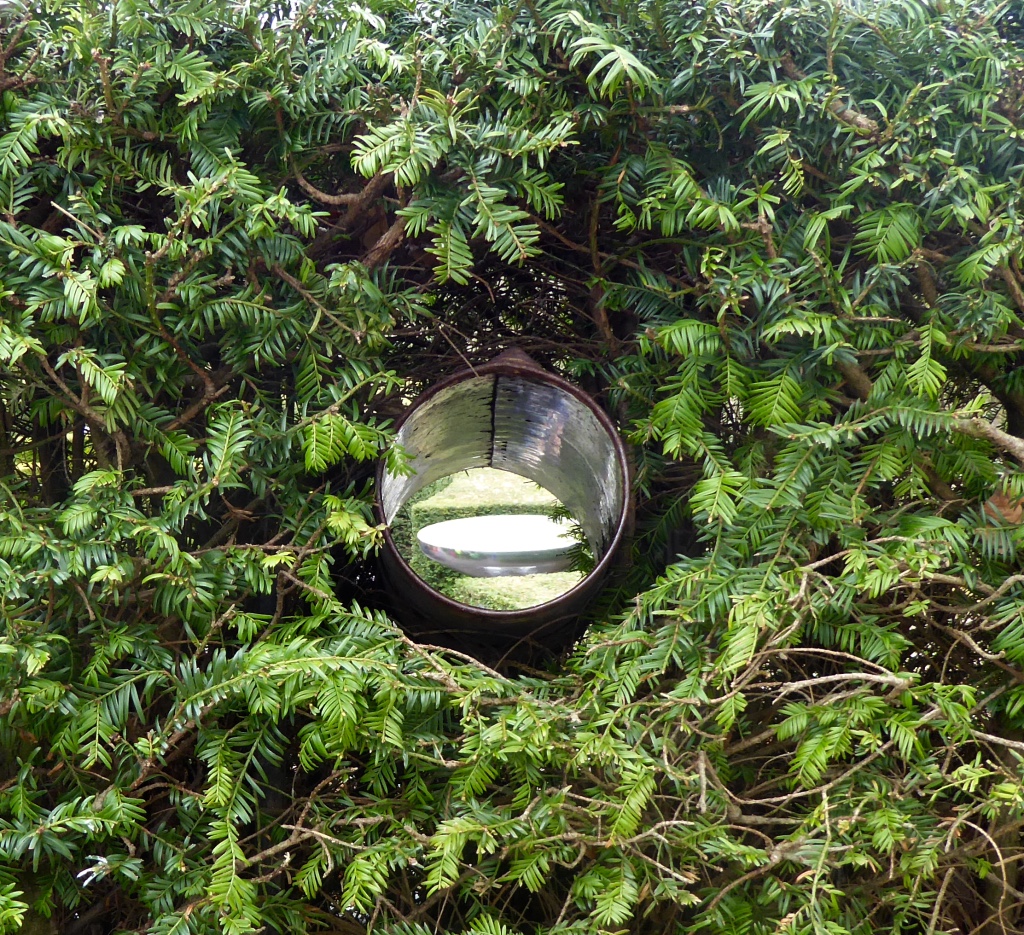
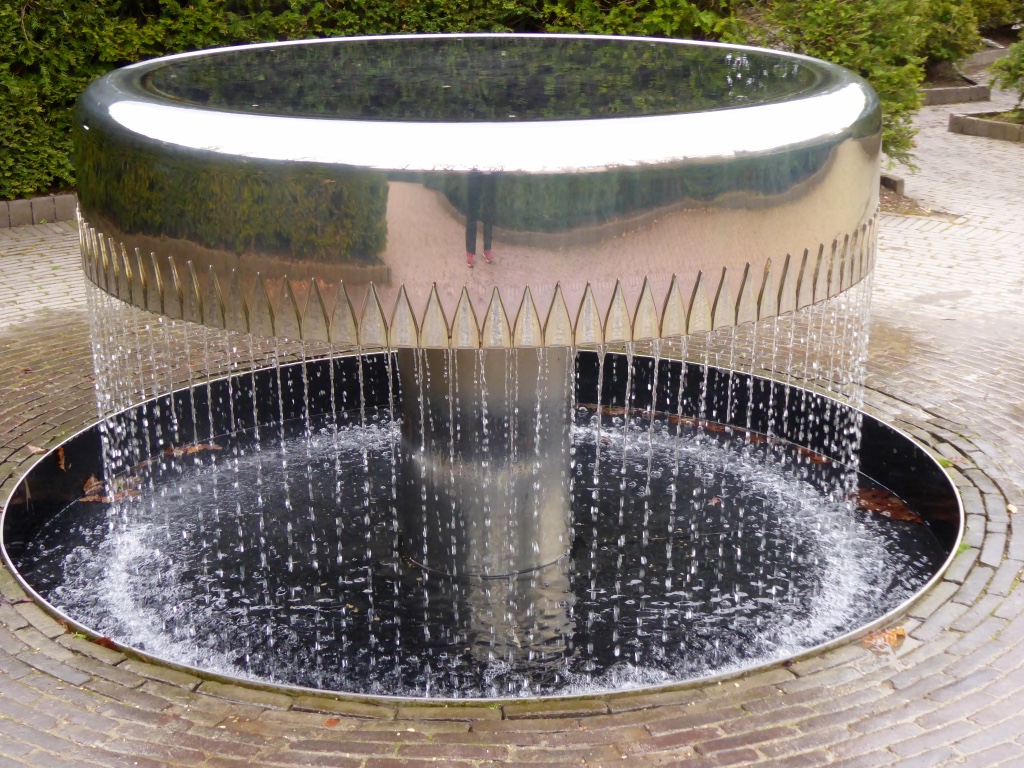
This garden features a topiary serpent in holly which snakes through the Garden, revealing a different water sculpture hidden in each of its coils. Each of the water sculptures are designed to show a different aspect of water and how it can be made to look and move. Inserted into the yew hedges were viewing tubes, each highlighting a different fountain.

We made our way through the Bluebell Wood up to the Venetian gates at the top of the Grand Cascade and into the Ornamental Garden; a structured garden brimming with plants and my favourite place. Here an intricate planting pattern is created with flowers and fruit and surrounded by pleached crab apples. There are pathways bordered by lavender and fruit trees and quiet places to sit and catch the sun.
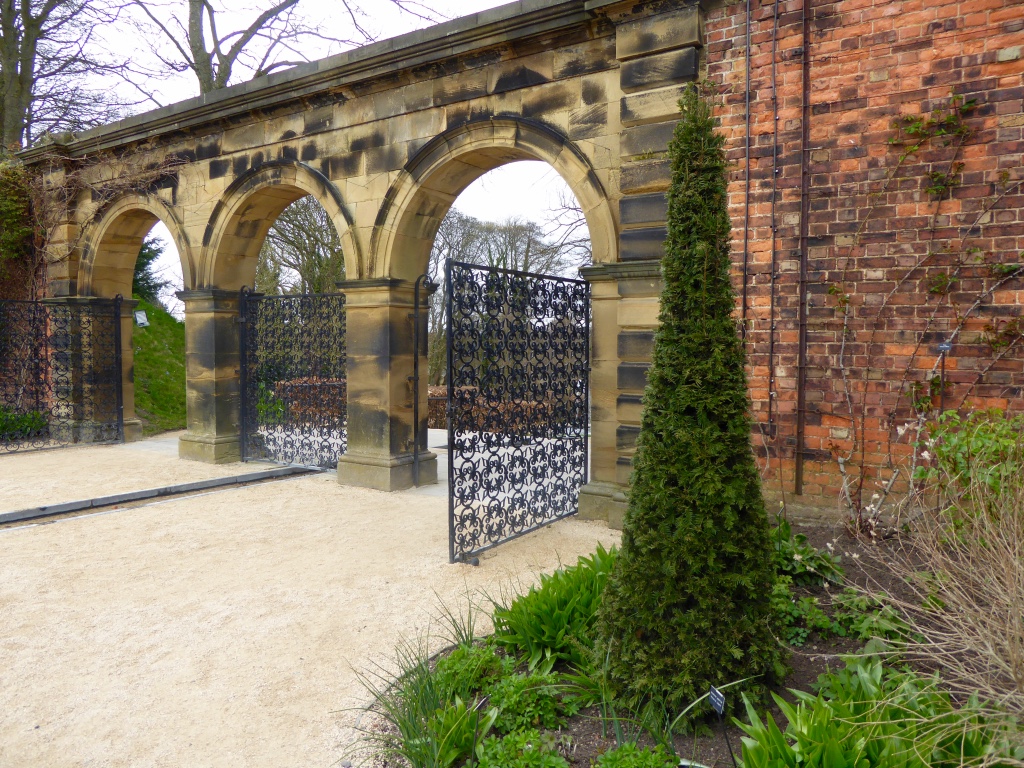
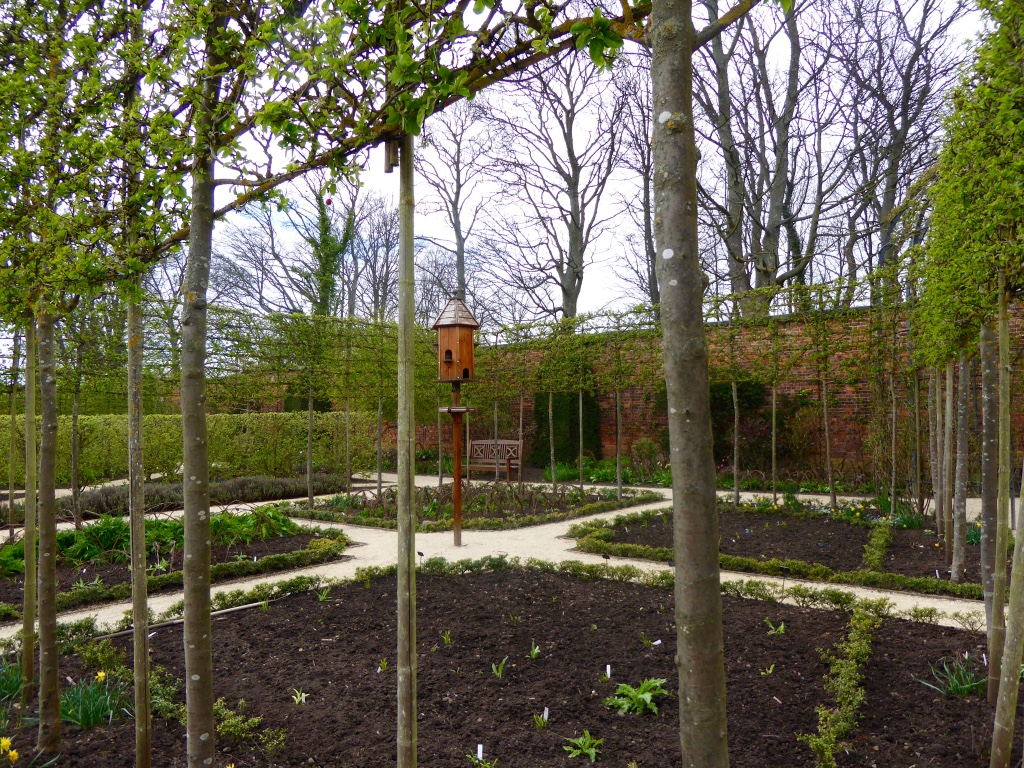
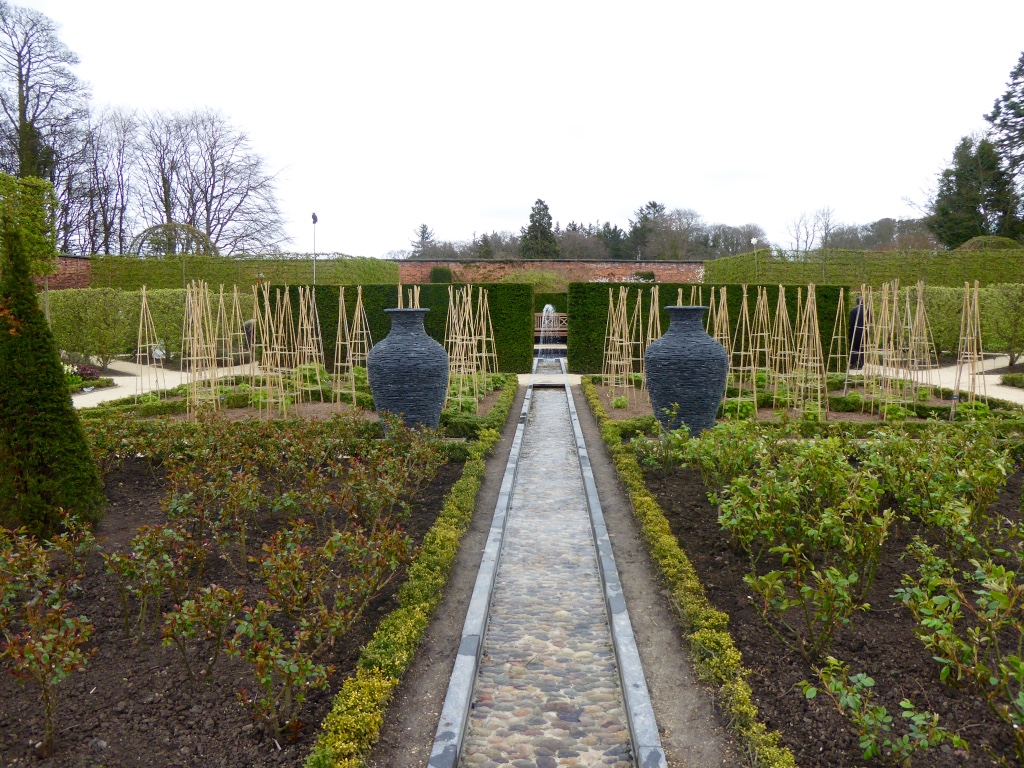
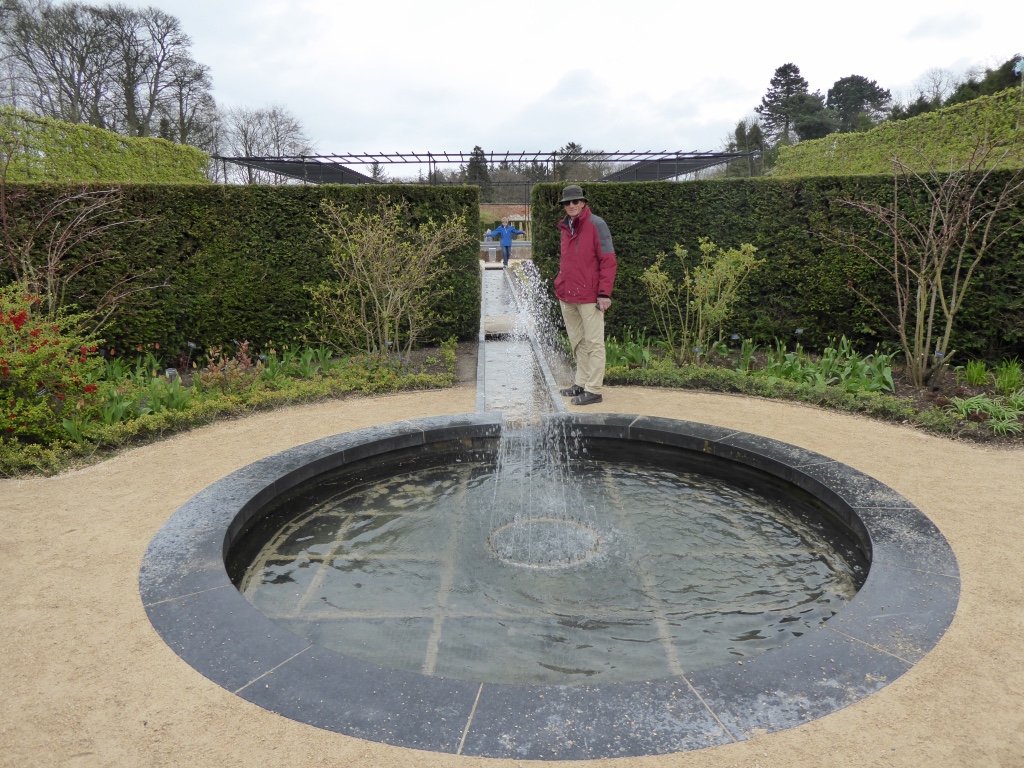
At it’s center lies a pool that spills into the rills that run throughout the Garden, and into two small secret gardens. Beds of bedding roses and delphiniums are edged in box, while cut flower species grow with annuals and bulbs alongside small fruit varieties.
We particularly liked the woven mounds of beech, which they used to keep all the taller varieties from falling over as well as the way plants were staked. Ed is right into pleached trees!!
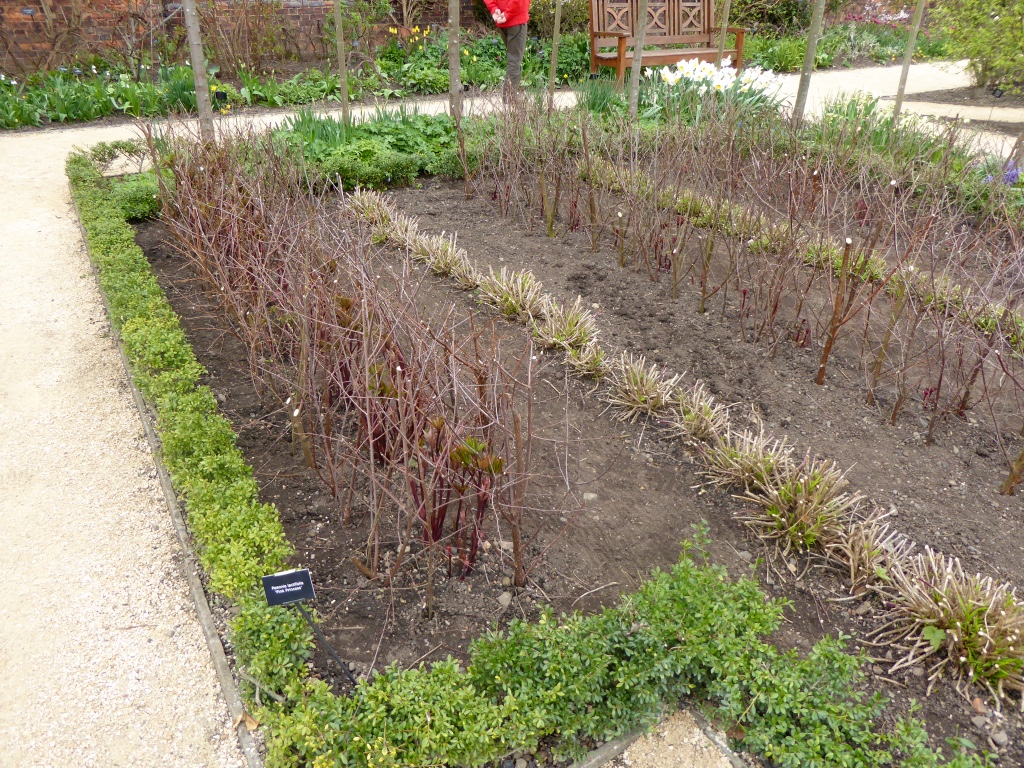
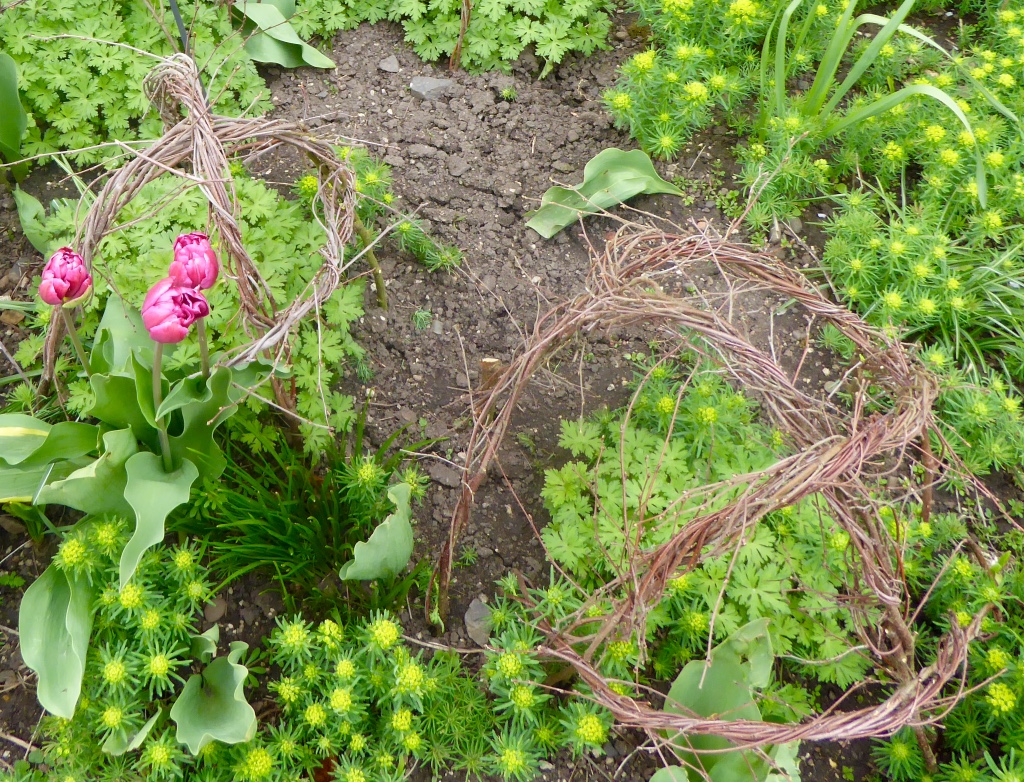
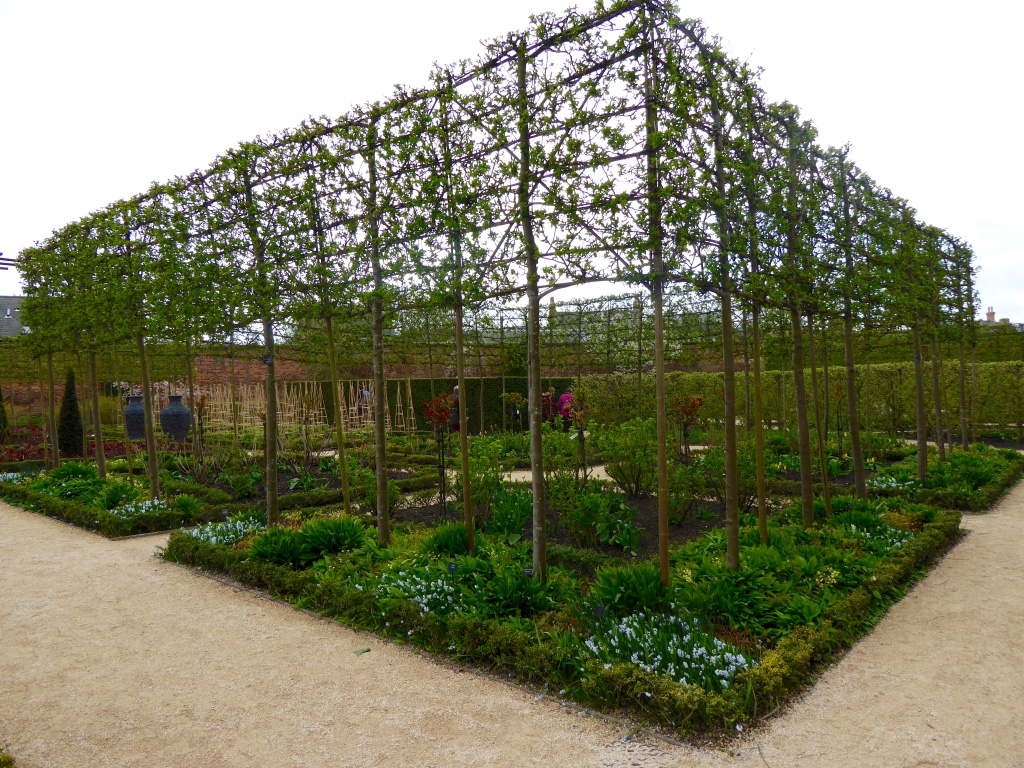
From the Ornamental Garden you can go down the side of the cascades through the many hornbeam pergolas which follow the stone curves, their windows looking onto the water and their twig chandeliers hanging from above
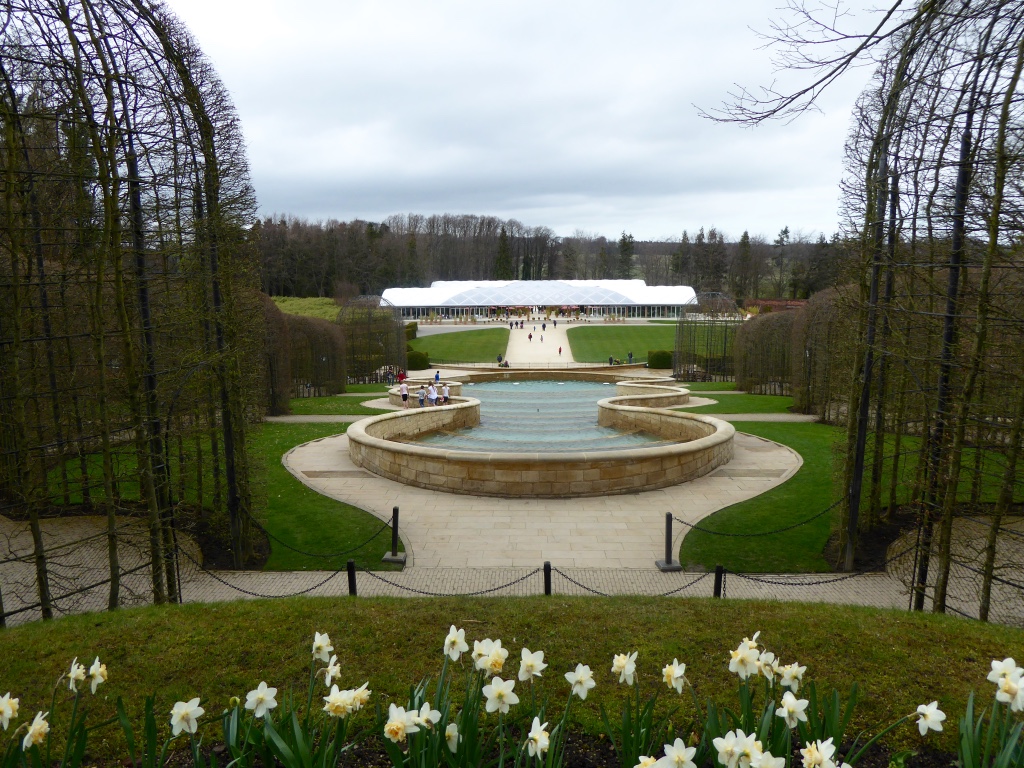
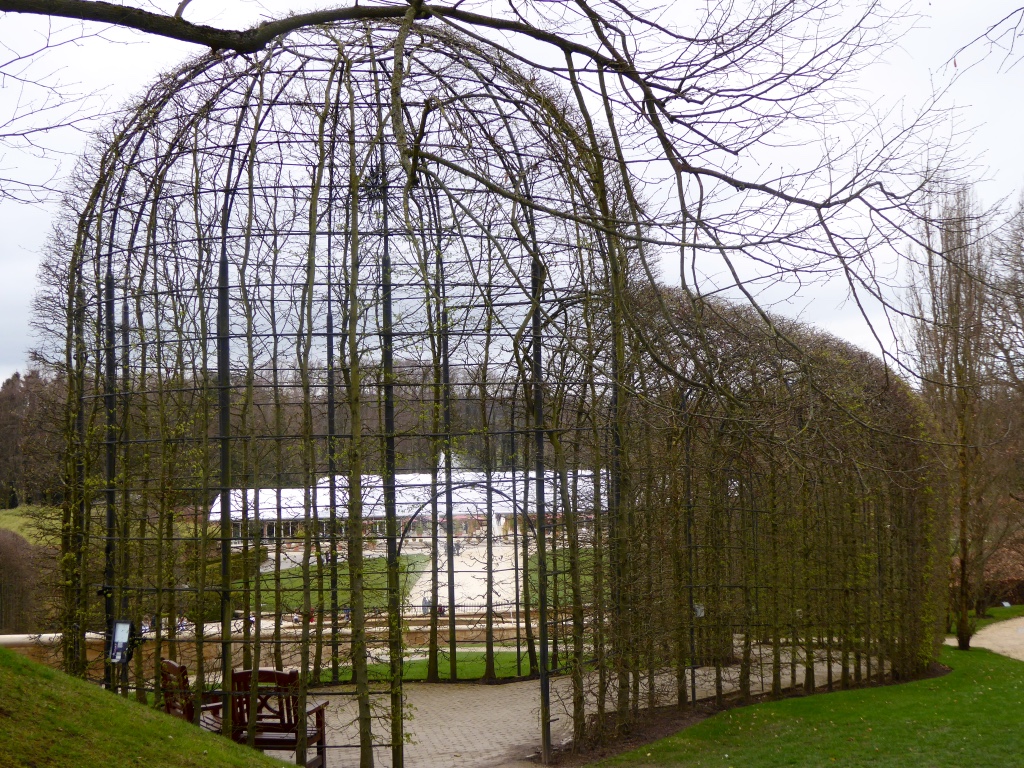
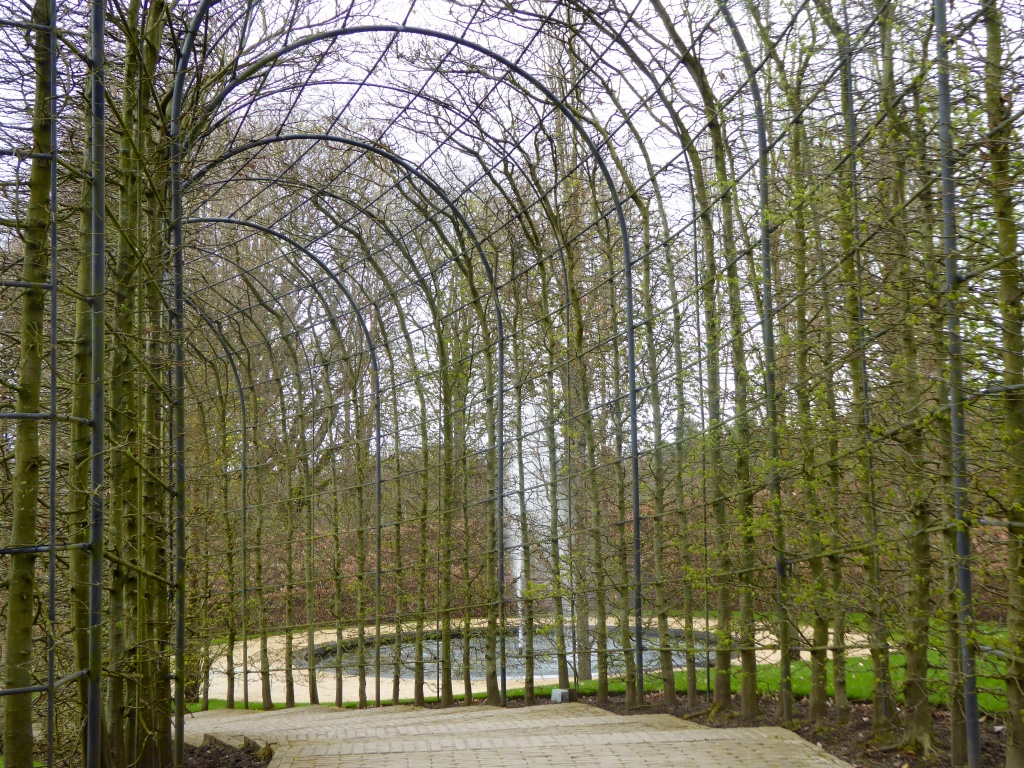
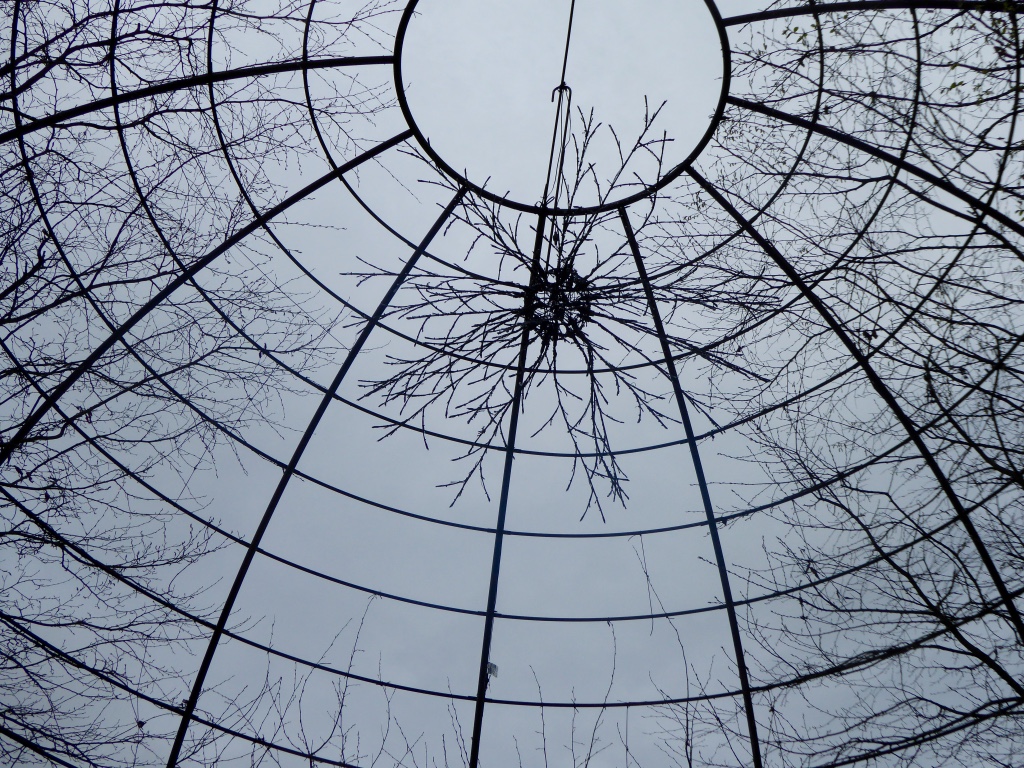
OR you can go down through the Cherry Orchard, which is planted with over 300 Tai Haku cherry trees. The trees are underplanted with daffodils, jonquils and 50,000 Purple Sensation Alliums (which come out a little later), and pathways meander amongst them, with azalea borders planted at the Orchard’s edge.
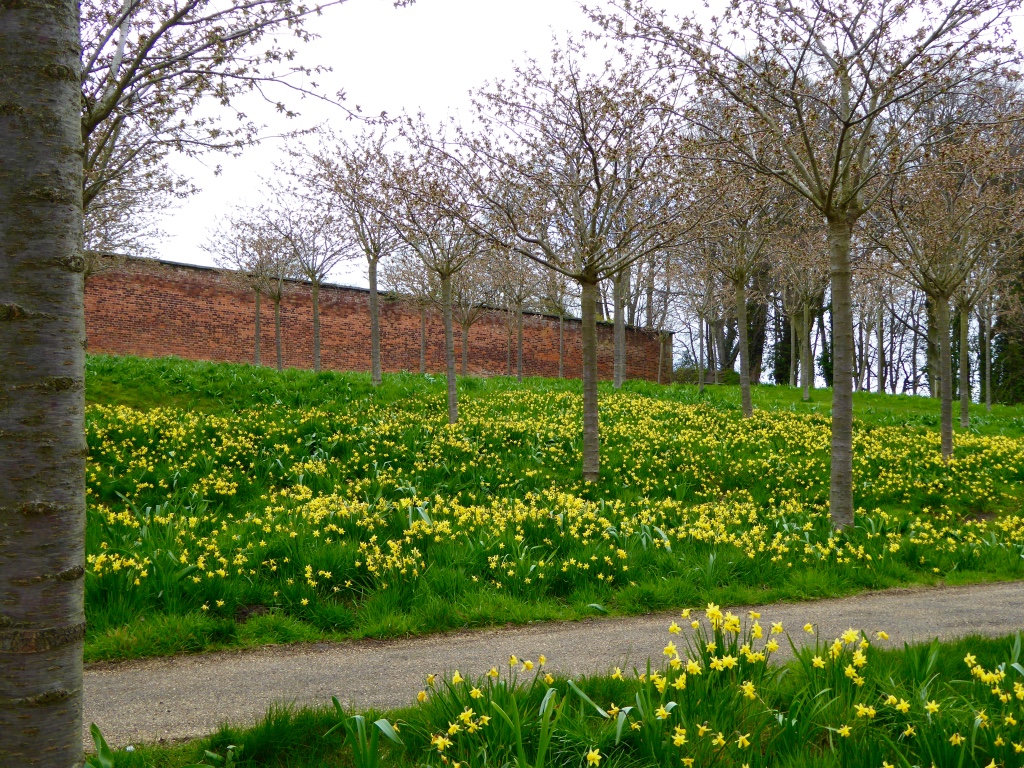
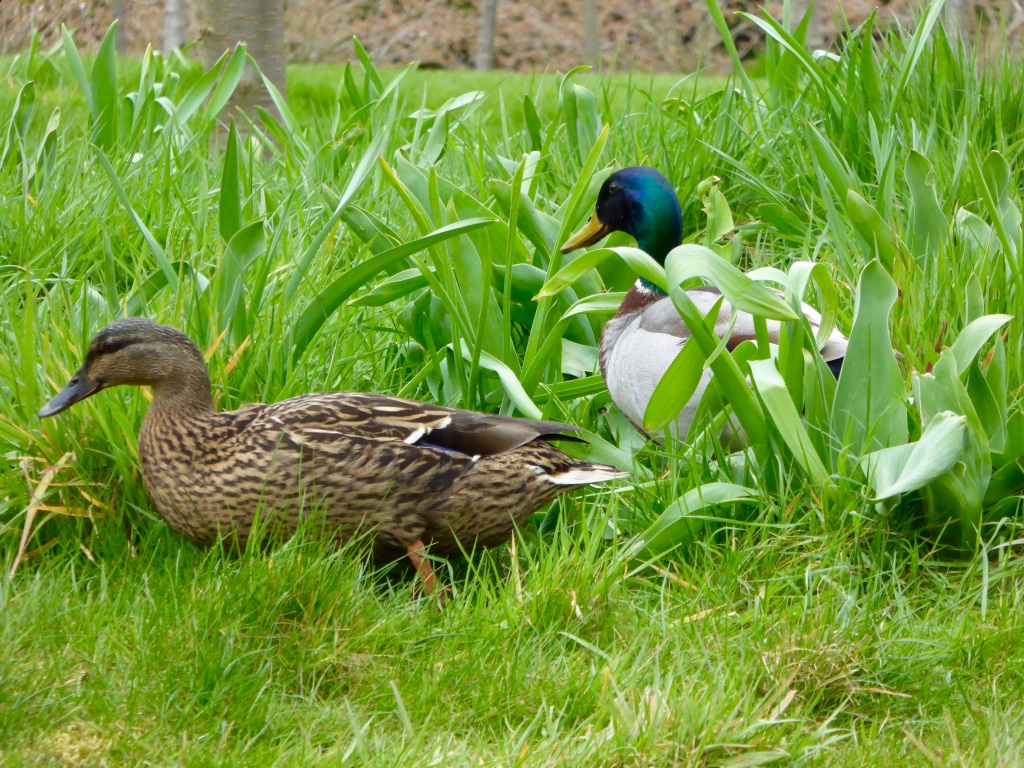
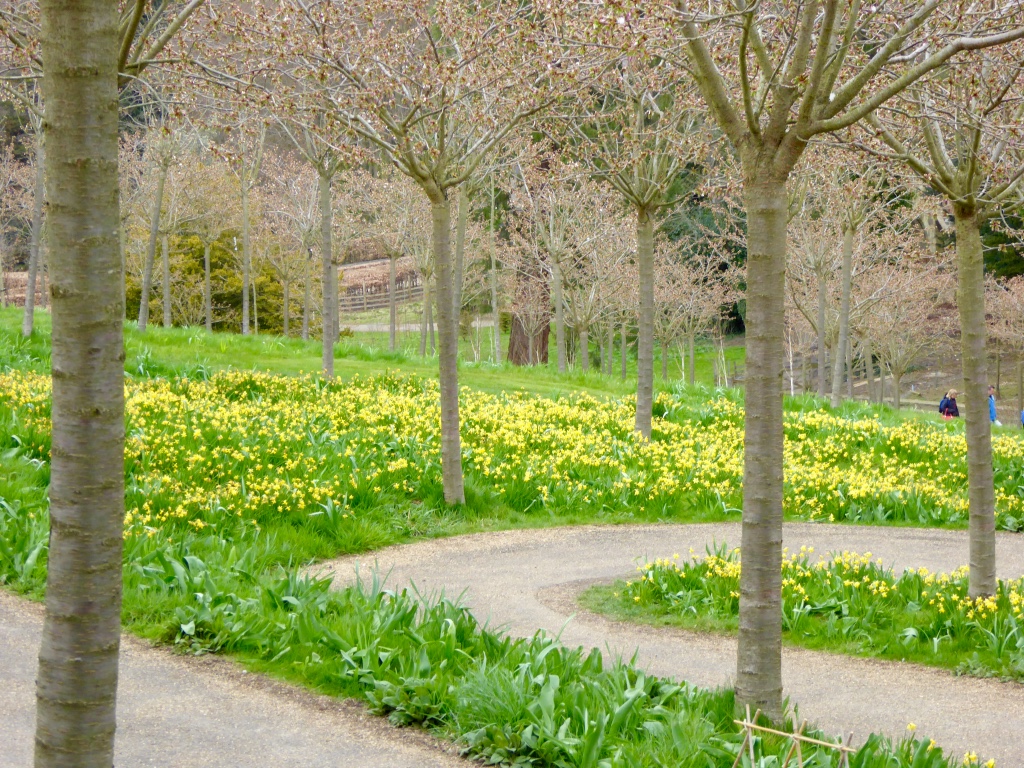
At the bottom is the Poison garden where, behind locked gates, are many varieties of deadly plants – some only displayed with Home Office approval. This is very popular with children and adults alike and is only accessed by guided tour. The guides are well into the spirit of things and play it up really well though we did wonder when they asked us whether it was true that more animals died from the fumes of burning oleander than from the bushfire itself!!
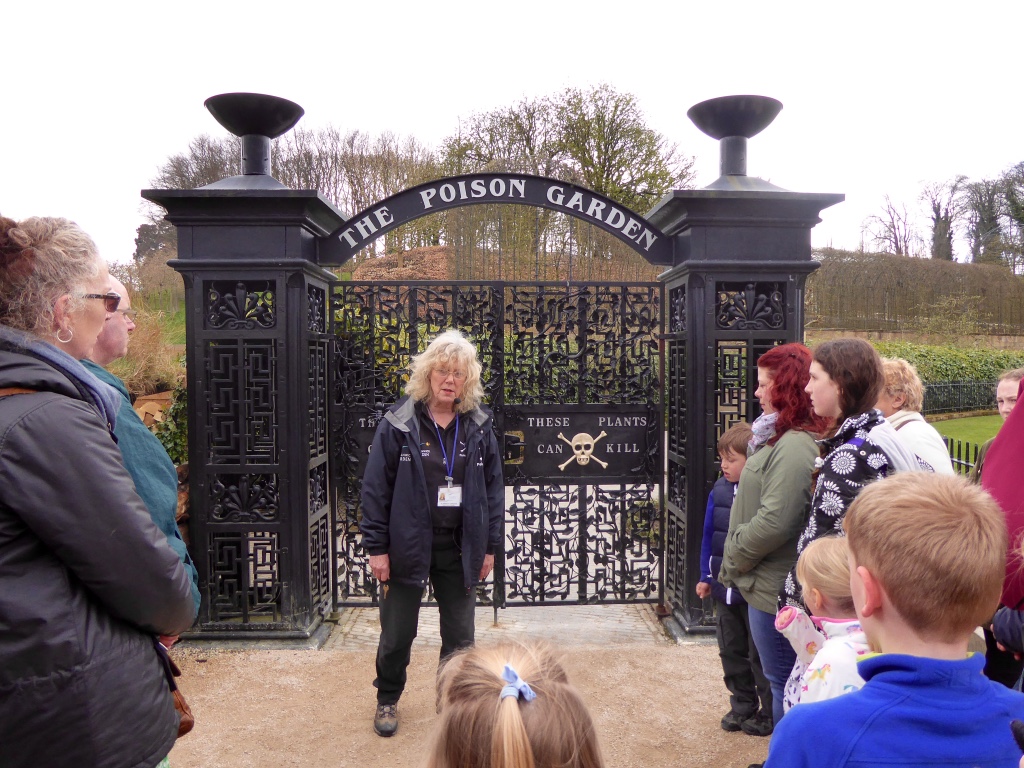
Before you leave the Gardens you come to the enormous and beautifully crafted Treehouse, which is built from Canadian cedar, Scandinavian redwood and English and Scots pine. It sits high in the treetops in a copse of mature lime trees and looks as if it’s been there forever. There are walkways in the sky and wobbly rope bridges for bouncing on as well as a café in the ‘potting shed’.
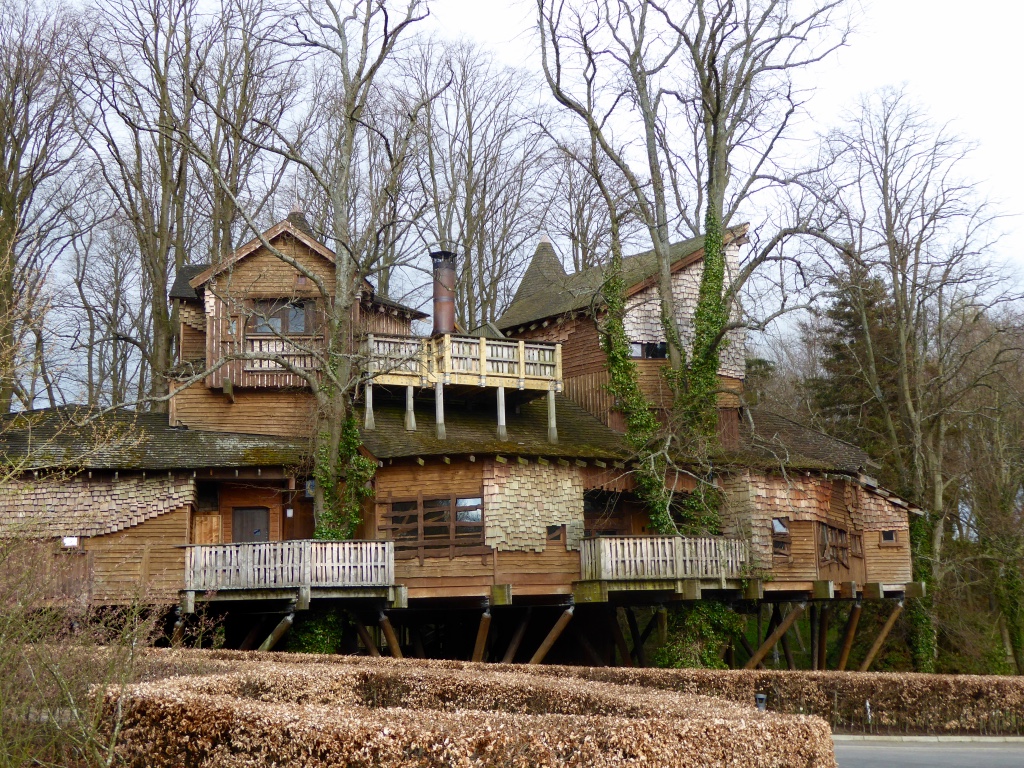
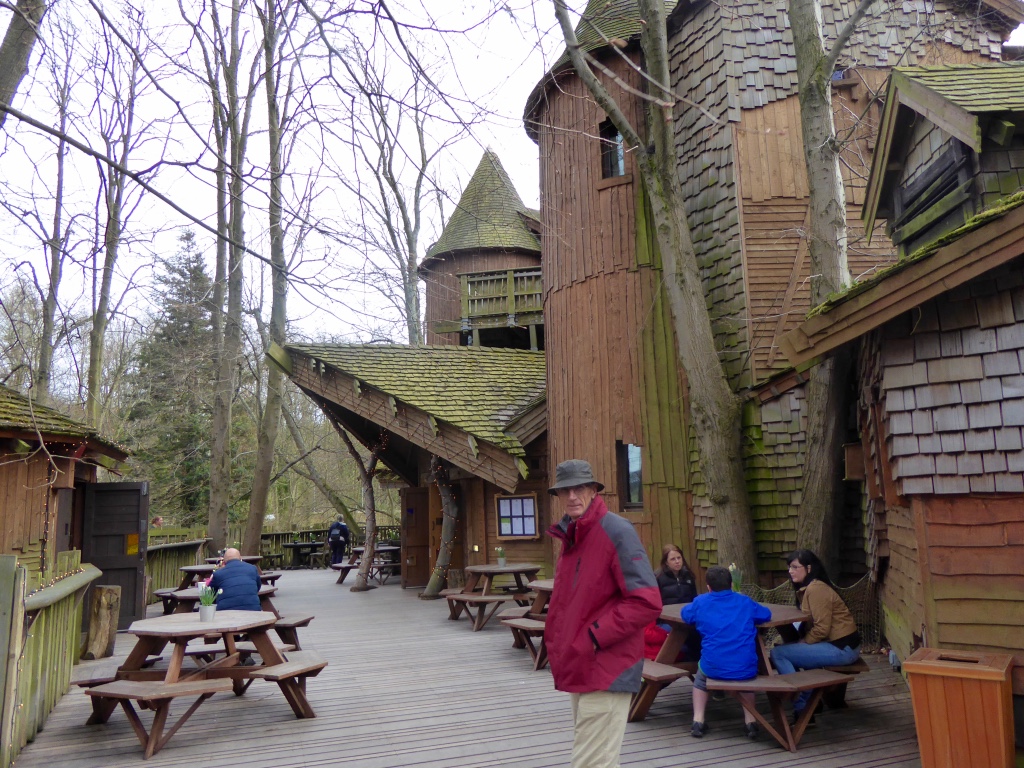
At the heart of the Treehouse is one of the most beautiful and unique restaurants to be found anywhere in the world. There’s a roaring log fire in the center of the room, trees growing through the floor, handcrafted furniture and screens created from fallen branches. Unfortunately you have to book a long time ahead and we were unable to get in.
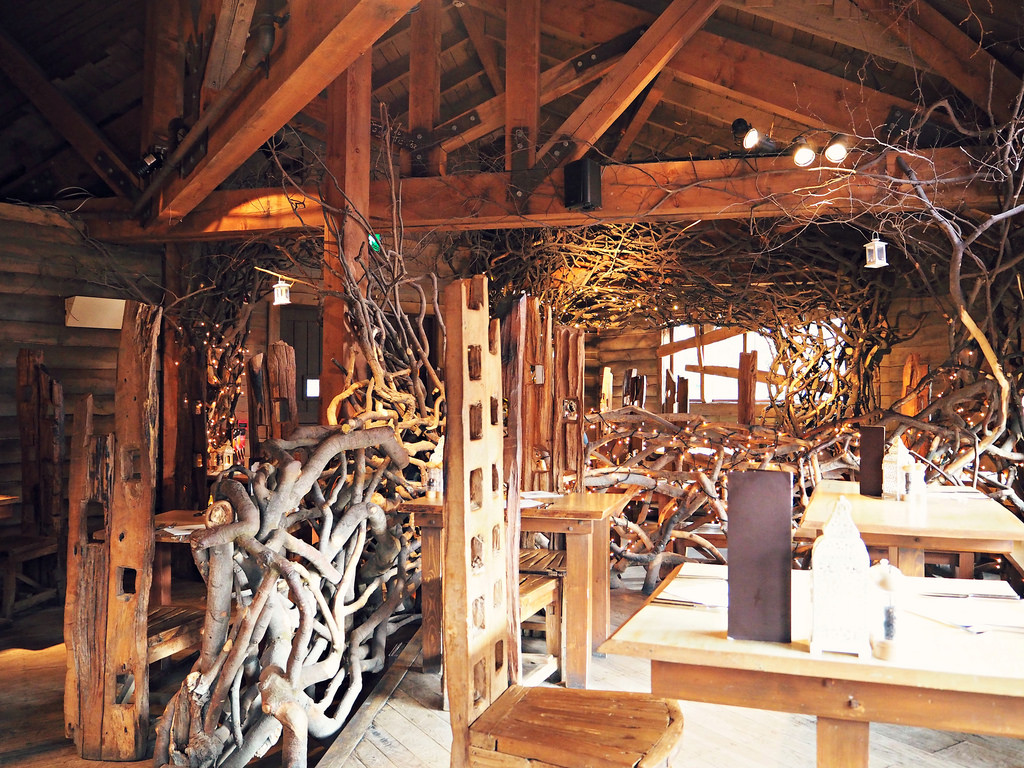
Underneath the Treehouse is the Woodland Walk where the path is lined with mature trees, wild garlic and, in spring, bulbs carpet the ground. Sculpture exhibitions are tucked in among the trees for added interest.
I could have spent a week there but we only had 5 hours and then it was back to our lovely B&B, a warm welcome from Bill and Jean and a comfortable night before tackling Alnwick Castle the next day –but that is Ed’s blog!
